Aleksandra Koblova
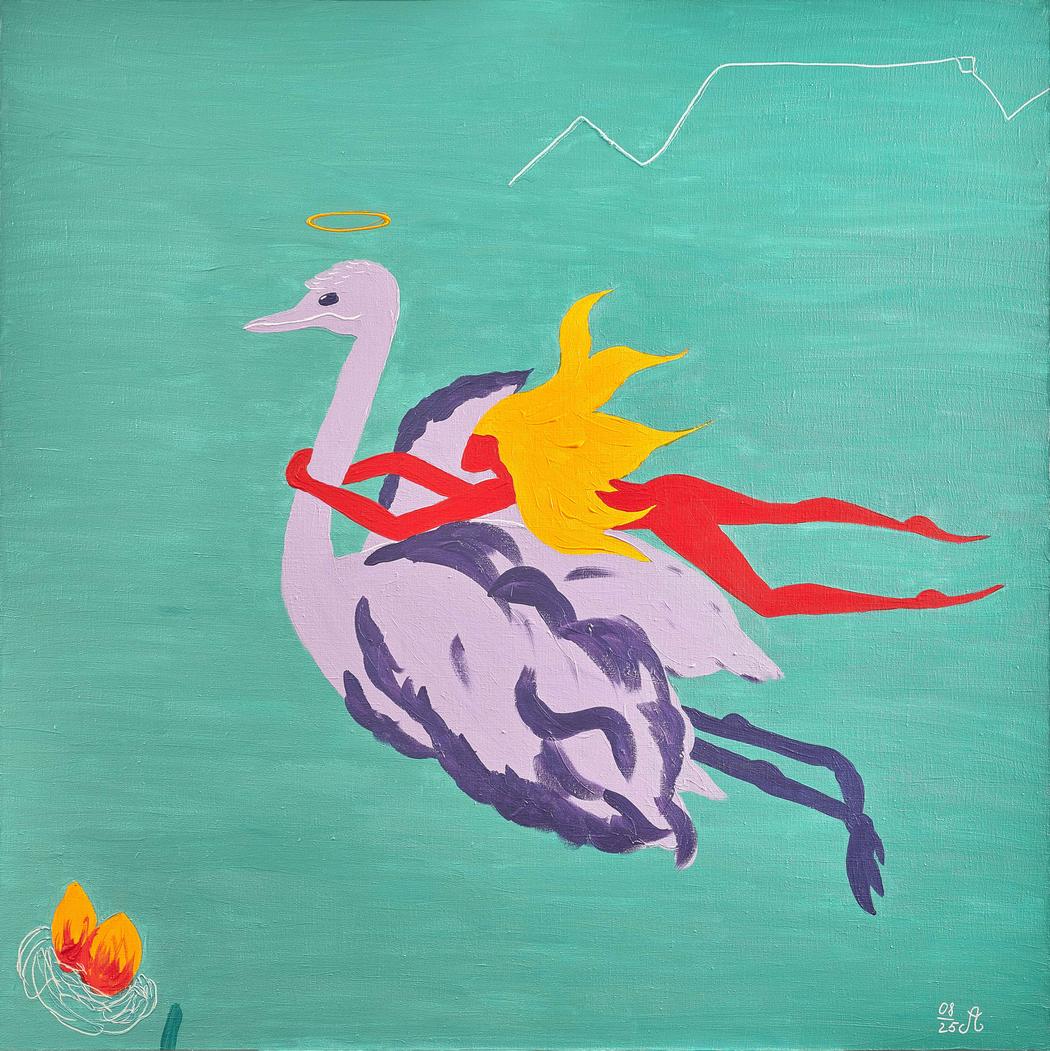 Aleksandra Koblova | Ostrich
Aleksandra Koblova | Ostrich
Your biography mentions a life-changing round-the-world journey. Which encounter during that trip most deeply shaped your artistic direction?
One of the most formative moments happened in the middle of the Pacific Ocean. For four days, we saw no land — only water and sky. That silence reset everything. And then I encountered a pair of manta rays — massive, calm, and completely unafraid. Watching them move with quiet confidence, I realized: this is what I want to paint — trust, freedom, and the peace that comes when we stop resisting and simply allow ourselves to be.
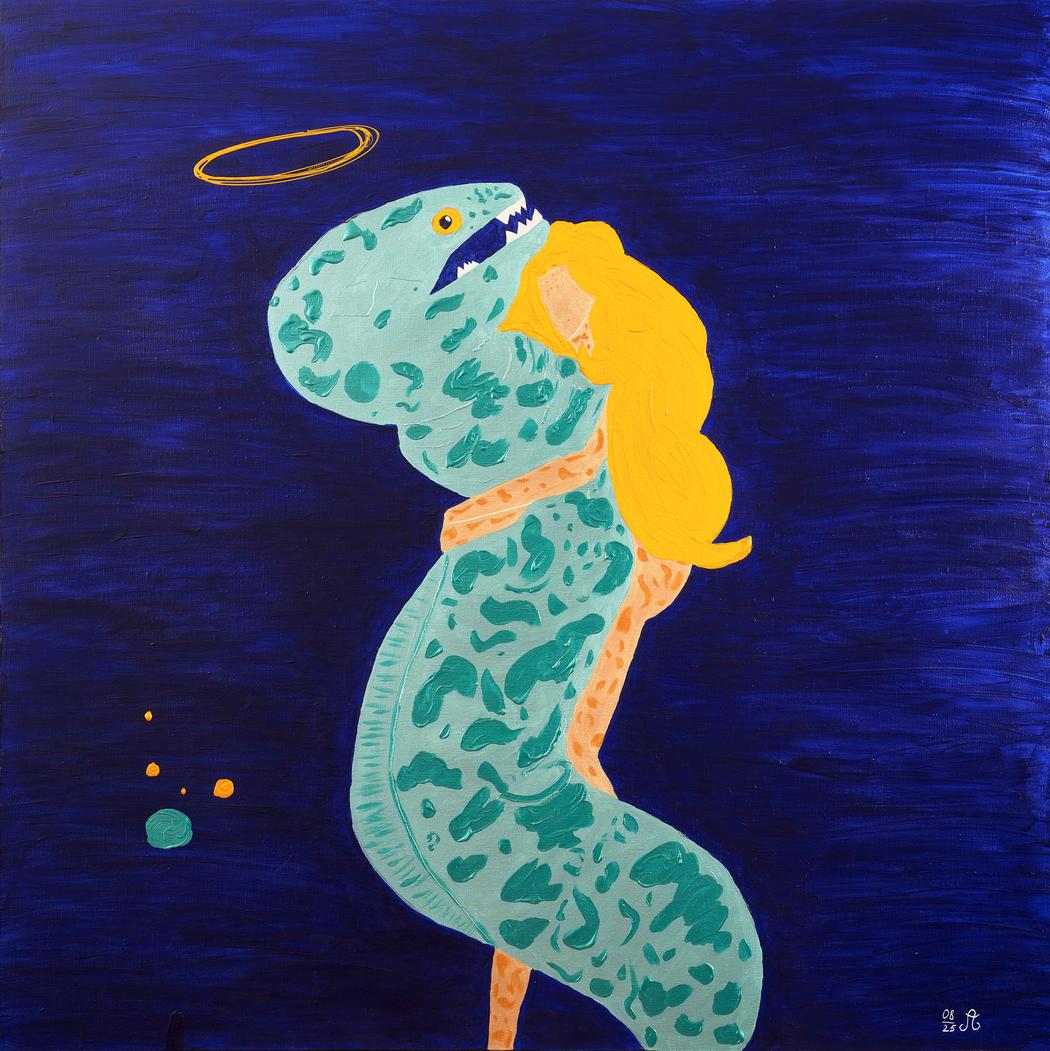 Aleksandra Koblova | Moray Eel
Aleksandra Koblova | Moray Eel
How did leaving a legal career influence the way you approach art today?
After over 12 years as a corporate lawyer — including leading a legal department — I realized I was deeply disillusioned with the legal system. Stepping away wasn’t easy; it meant letting go of structure, status, and the “serious woman” persona I had built. But once I allowed myself to become a free creator, everything changed. I began noticing beauty again — I finally had the time and emotional space to see it.
Now, I approach art with both freedom and precision. My legal background gave me the ability to structure, negotiate, and manage my practice like a business — but my paintings are a kind of quiet protest. Not political, not reactive — but restorative. As someone who spent years in high-pressure courtrooms, I now create art that helps people pause, breathe, and reconnect with something tender. My work is a counterweight to the world’s noise — including the one I once helped uphold.
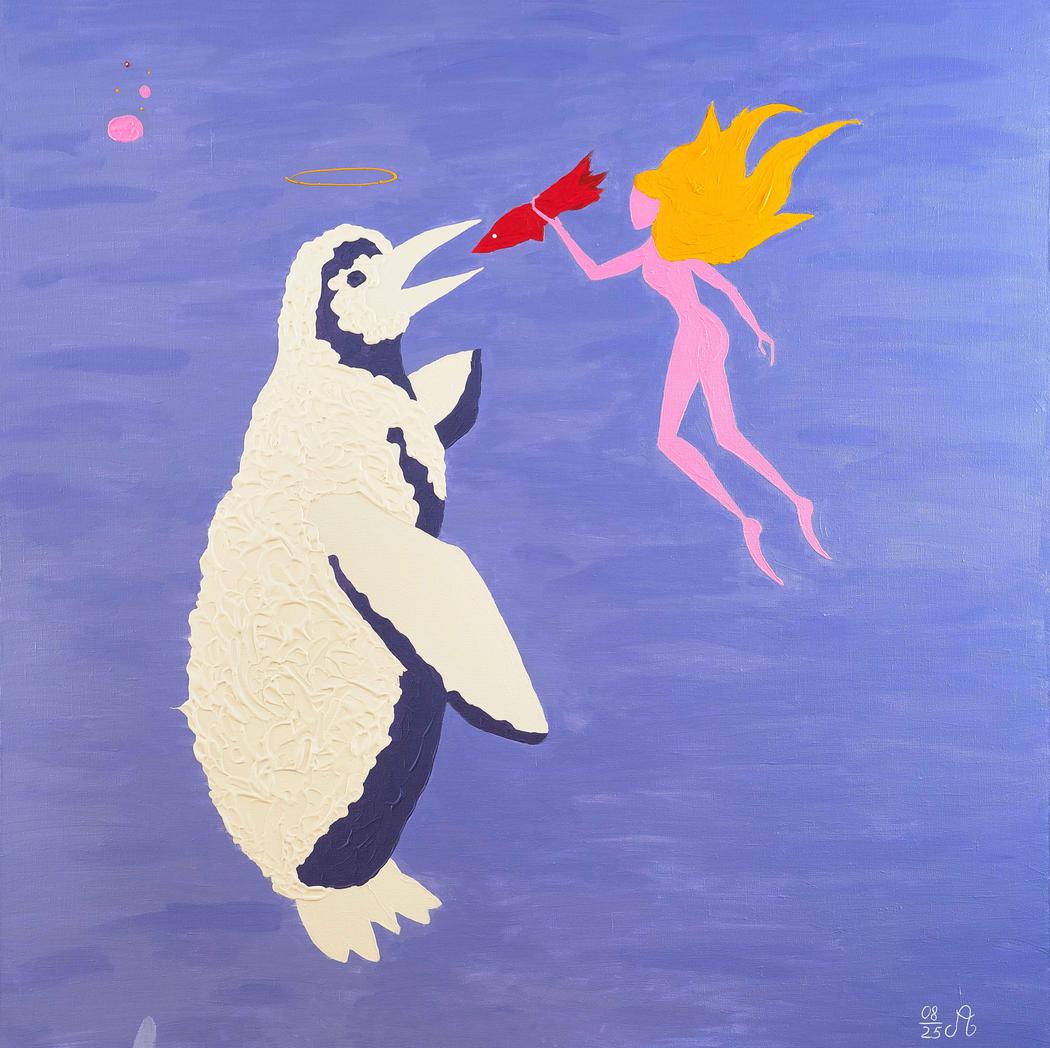 Aleksandra Koblova | Penguin
Aleksandra Koblova | Penguin
Was there a decisive moment when you knew you had to dedicate yourself fully to art?
There was no single dramatic turning point — the shift was gradual and deeply personal. I moved from being in front of the camera to behind it, from photography to digital editing, and eventually, I found myself irresistibly drawn to painting.
Art came into my life only after I left my legal career, though photography had always been there. One experience finally made the decision inevitable — although I cannot share the details due to an NDA, it changed everything.
What helped most was support: my husband, family, and friends believed in me from the very beginning. I felt lost at first, but I began studying the art market and found solid ground.
Now, each finished painting reaffirms the decision. It wasn’t a rejection of my legal self — it was simply another facet of who I am. And looking back, it feels less like a choice and more like destiny.
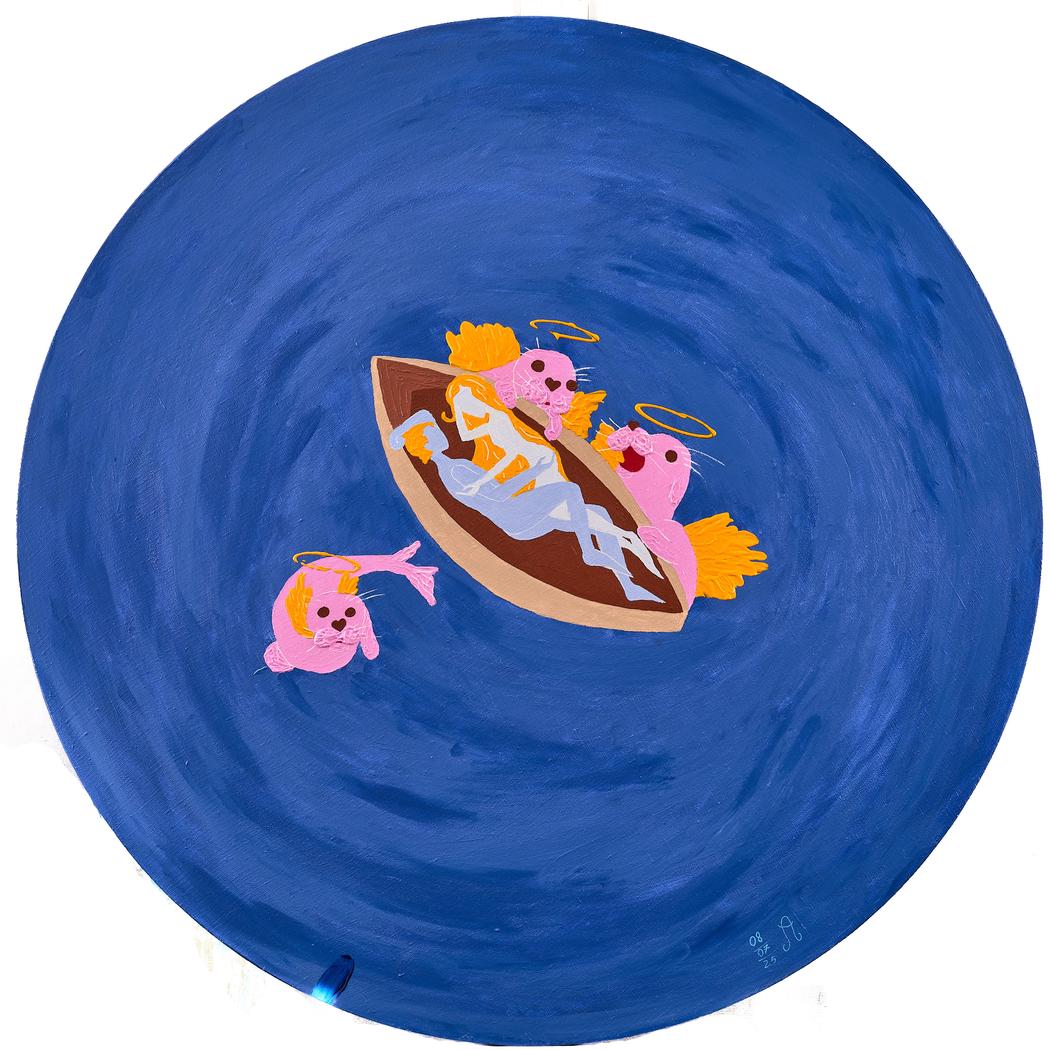 Aleksandra Koblova | Only Us
Aleksandra Koblova | Only Us
Your paintings often feature halos and complementary color pairs. How did these visual symbols develop, and what do they mean to you personally?
Halos and color inversions grew naturally out of my round‑the‑world sketches. I began giving the animals halos almost instinctively — not as decoration, but as a sign of their innocence. They are not symbols of power or mythology, but of a quiet, sacred presence I sensed in each encounter.
The complementary colors came later, as a way of showing reflection. In my paintings, the girl takes on the animal’s color and the animal wears hers. It’s a visual language for mutuality: we affect and transform each other.
For me, these elements are not stylistic tricks but reminders — of reverence, of empathy, of how we see ourselves mirrored in the more‑than‑human world. They make each work a small ritual of recognition rather than a portrait.
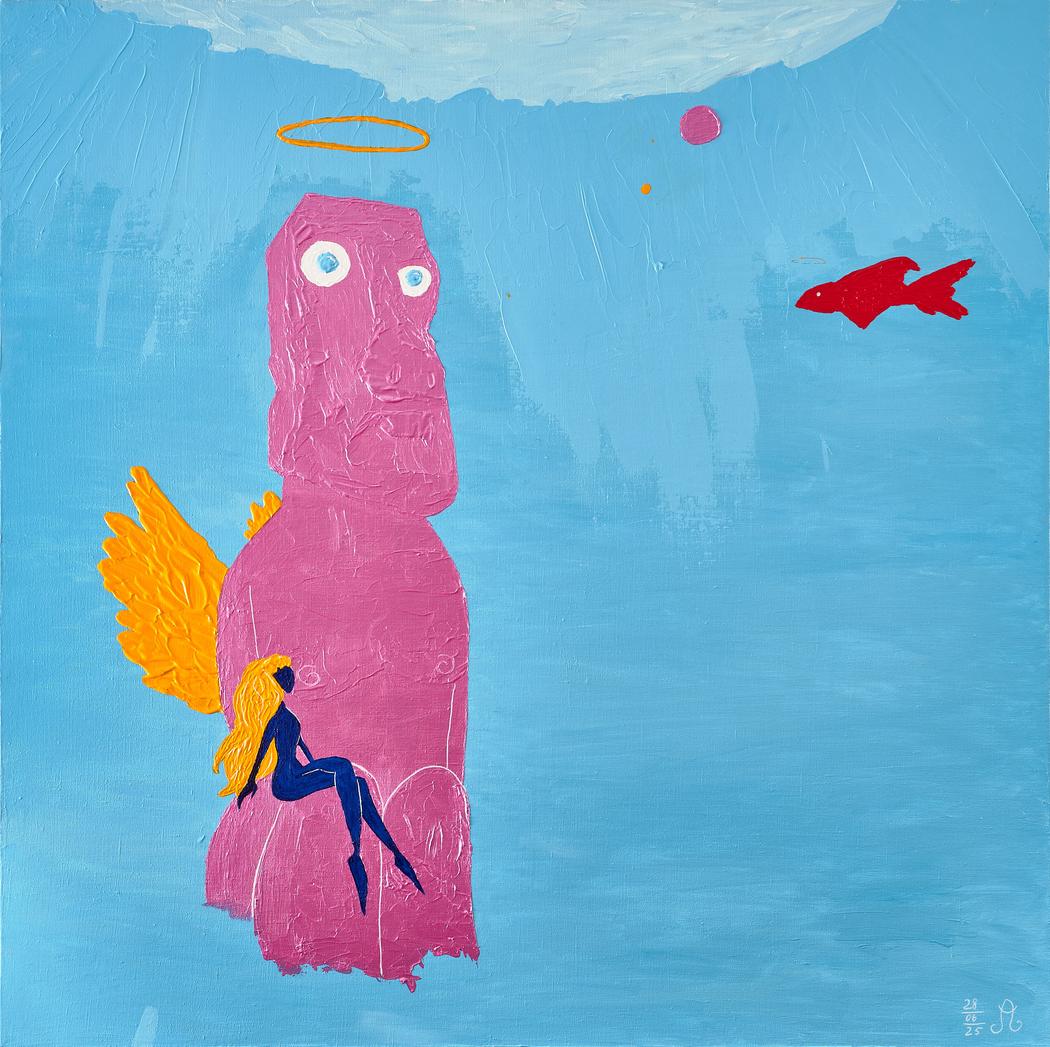 Aleksandra Koblova | Nothing Moved – And Everything Changed
Aleksandra Koblova | Nothing Moved – And Everything Changed
How do you choose which animals and landscapes will inhabit each painting?
The animals are not chosen — they appear.
Each one is linked to a place I visited on my round-the-world journey. It’s not about exotic species or symbolism for its own sake. I pay attention to who stayed in my memory, who left a feeling behind.
It’s the animal I actually saw — like a giant manta ray in the Pacific or a penguin colony near Cape Town.
Each work becomes a small dialogue: between species, between emotions, between inner and outer space.
You emphasize non-toxic paints and sustainable materials. What challenges or discoveries have you faced in keeping your practice eco-friendly?
I believe that at this point, there are no real difficulties: all materials are readily available — linen, acrylic paints, recycled plastic for packaging. It’s simply a matter of intention and willingness.
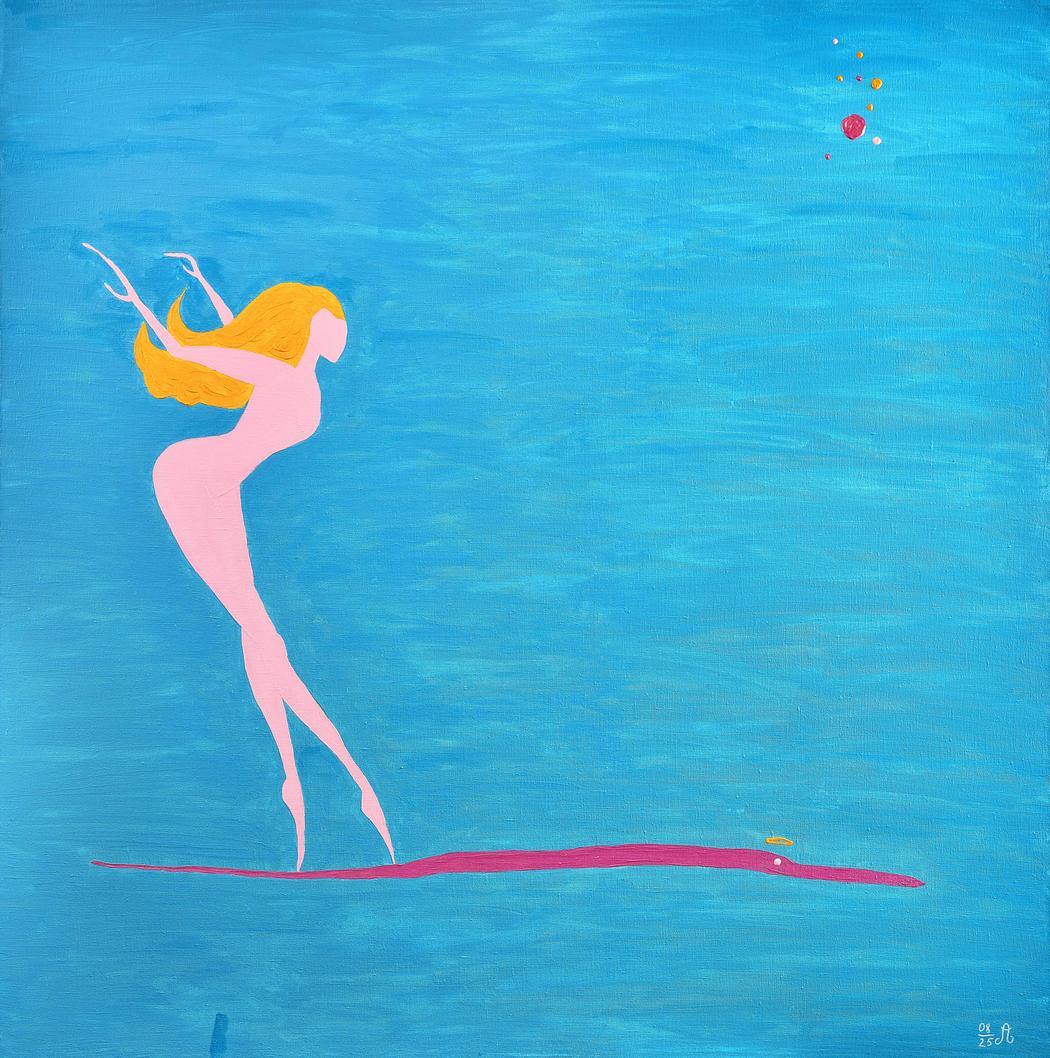 Aleksandra Koblova | Needlefish
Aleksandra Koblova | Needlefish
What kind of experience do you hope visitors have when they stand in front of one of your paintings?
When someone stands in front of my painting, I hope they feel calm — not just visually, but emotionally. I want them to sense a quiet pause, a soft exhale. My goal is to offer a space where trust feels possible again — in oneself, in the world, and in something greater.

Leave a Reply